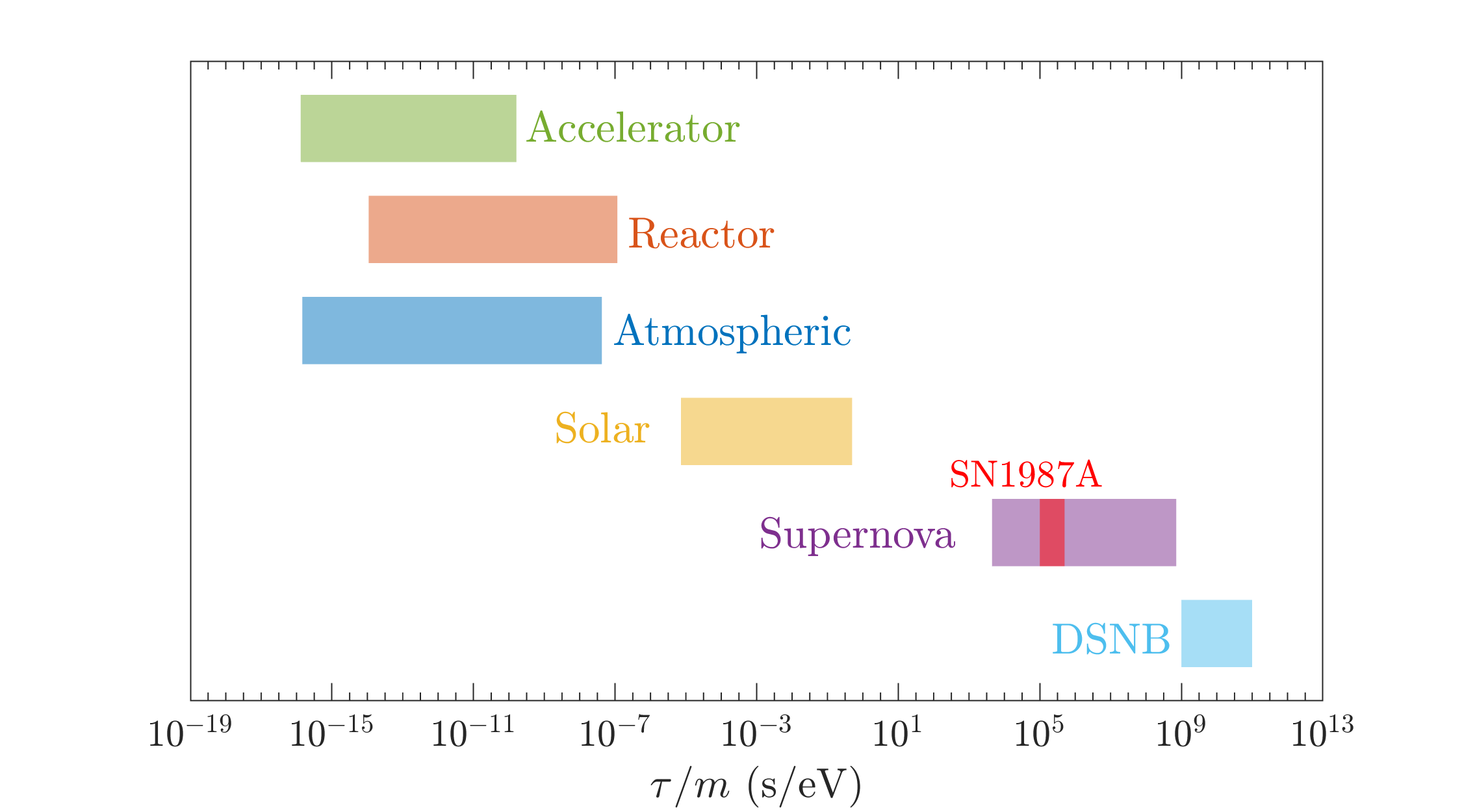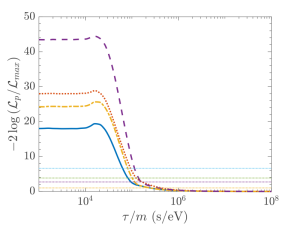
Figure 1: typical sensitivities to lifetime-to-mass ratios for
neutrino non-radiative decay, obtained considering typical distances and neutrino energies, for different neutrino sources. The bands correspond to either almost full decay or to practically no decay. The band for SN1987A is for neutrino energies between 10 and 50 MeV.
neutrino non-radiative decay, obtained considering typical distances and neutrino energies, for different neutrino sources. The bands correspond to either almost full decay or to practically no decay. The band for SN1987A is for neutrino energies between 10 and 50 MeV.
Pilar Iváñez-Ballesteros (APC PhD student) and Maria Cristina Volpe (APC Theory group) have published an article in the review Physics Letters B presenting the very first likelihood analysis of the 24 neutrino events from the SN1987A including the possibility that neutrinos can decay non-radiatively [1].
On February 23, 1987, Sk-69°202 exploded in the Large Magellanic Cloud,
a satellite galaxy of the Milky Way, producing SN1987A. SN1987A was unique since neutrinos from the collapse of the stellar core were detected for the first time by the detectors Kamiokande-II, IMB, and Baksan.
R. Davis (Homestake) and M. Koshiba (Kamiokande Collaboration) were recipients of the 2002 Physics Nobel Prize, for the pioneering observations of solar and supernova neutrinos respectively, along with R. Giacconi (X-ray astronomy). The 24 neutrino events from SN1987A have since been an incredible laboratory for particle physics and astrophysics. In particular, their analysis has provided bounds on neutrino properties, new particles and non-standard interactions.
Among the unknown neutrino properties is neutrino non-radiative decay. Indeed, since neutrinos are massive particles, a heavier neutrino can decay into a lighter one with the emission of a massless (pseudo)scalar boson, such as the Majoron. Limits on neutrino non-radiative two-body decay were obtained using neutrinos from accelerators, reactors, the Sun (Figure 1) or ultra-high energy neutrinos.
By performing the very first likelihood analysis of the 24 neutrino events from SN1987A ,including the possibility that neutrinos can undergo non-radiative two-body decay, Pilar Iváñez-Ballesteros and Maria Cristina Volpe obtained a competitive lower bound on the lifetime-to-mass ratio
τ /m ≥ 2.4 × 105 s/eV (1.2 × 105) s/eV at 68 % (90 %) C.L.
of neutrino mass eigenstates ν2 and ν1 (Figure 2). This result excludes all previous limits on the lifetime-to-mass ratio in inverted mass ordering, obtained in particular with reactor, solar and high energy neutrinos. Moreover the lower bound obtained is competitive with the model-dependent limits from cosmology [1].
Figure 2 : Profile likelihood ratios from the 7D likelihood analysis of SN1987A events (case of inverted neutrino mass ordering). The calculations include flavor conversion due to the Mikheev-Smirnov-Wolfenstein (MSW) effect and neutrino decay in a 3ν flavor framework. The curves correspond to the cases without Baksan events and with background (full line), with Baksan events and background (dot-dashed line), without Baksan events and without background (dotted) and with Baksan events and without background (dashed line). The dashed straight lines from bottom to top correspond to 68 %, 90 %, 95 %, and 99 % C.L.
Reference
[1] Pilar Iváñez-Ballesteros, Maria Cristina Volpe, "SN1987A and neutrino non-radiative decay", Physics Letters B 847 (2023), 138252.
The bound is included in the Review of Particle Physics -- S. Navas et al. (Particle Data Group) Phys. Rev. D 110, 030001 (2024).
Services/Groupes:
- Théorie
Objet de la publication:
Publications

